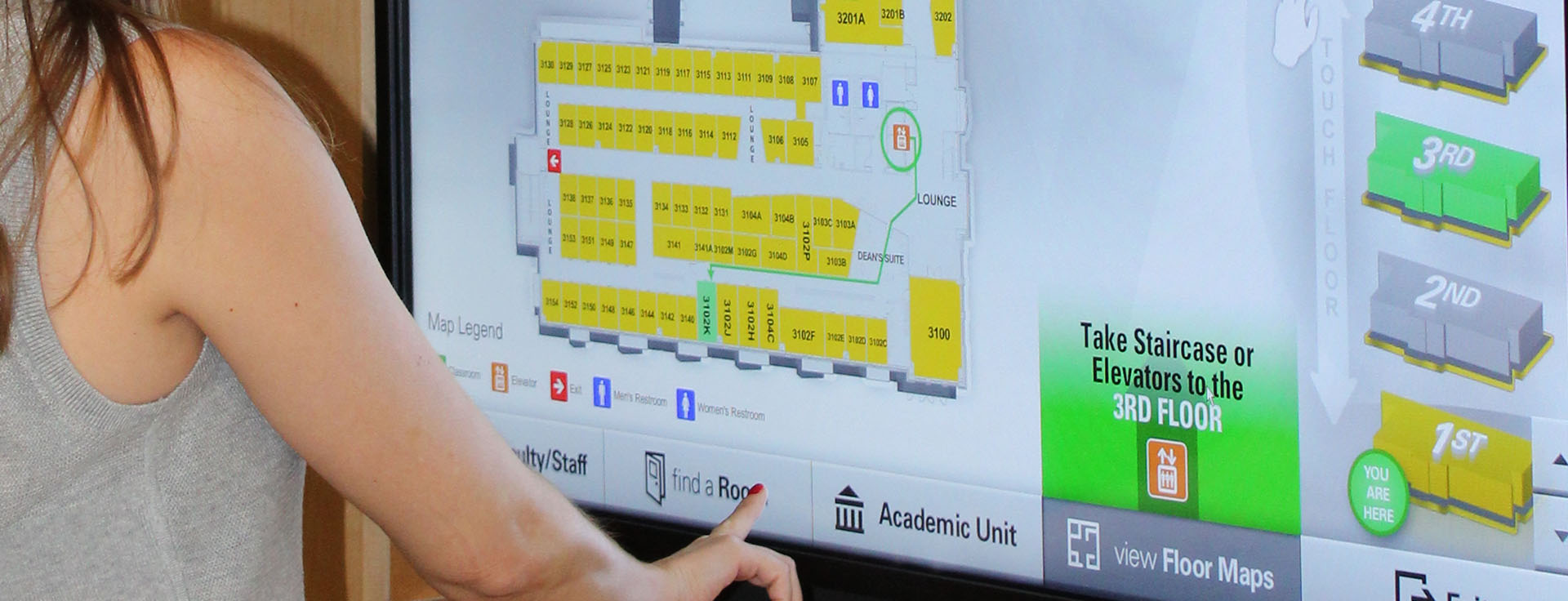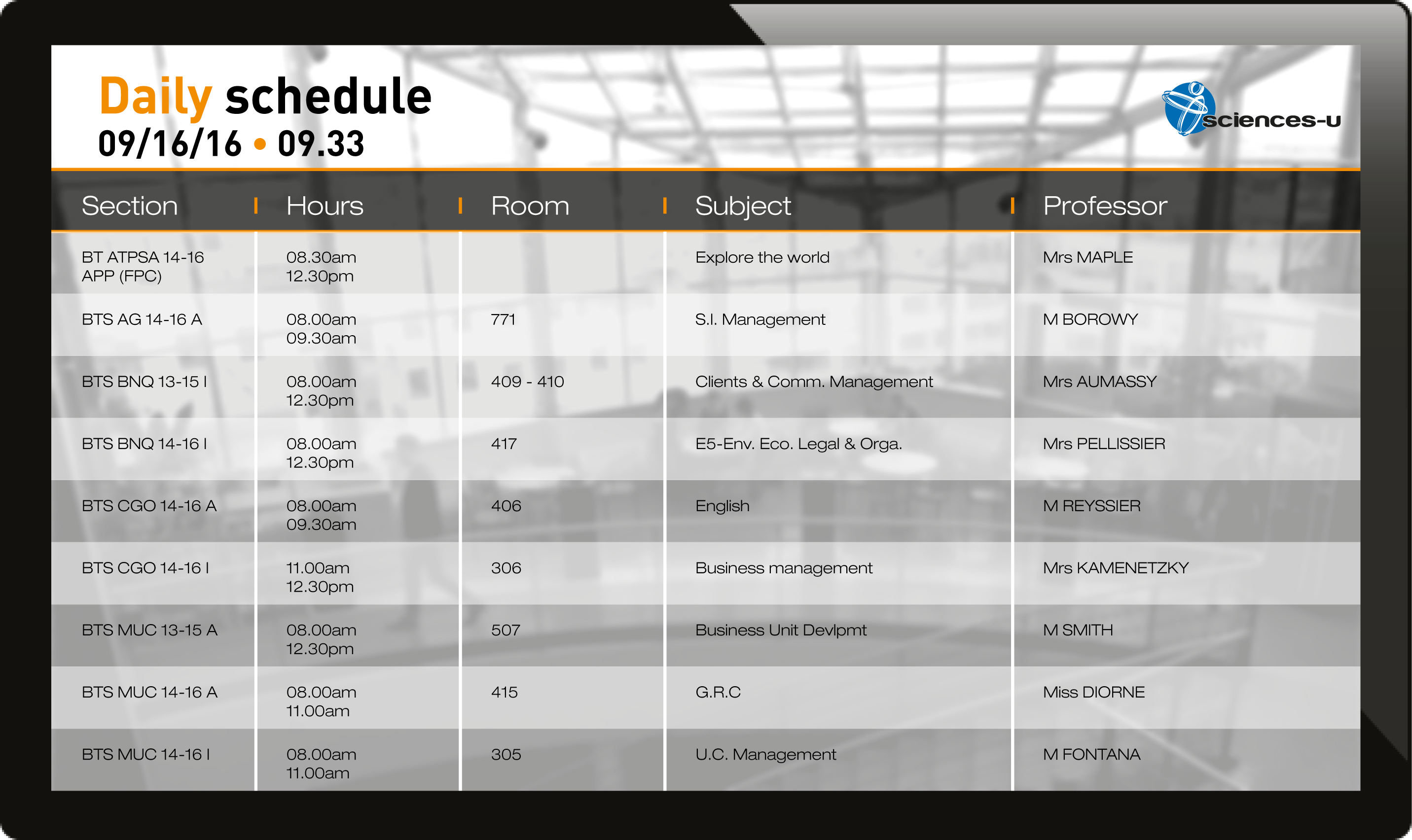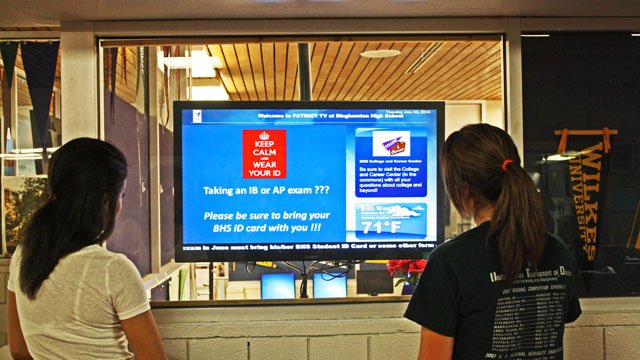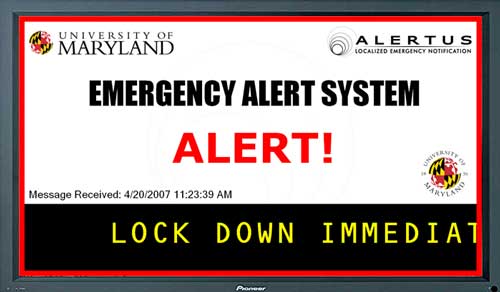Digital platform turns out to be an efficient and, implementation-wise, relatively simple system to provide a large range of contents to educational institutions’ stakeholders. The digital boards help increase the resonance of the displayed messages while keeping the audience engaged. Integrating a digital board into scholastic environment is now cheaper than ever, so even smaller institutions can afford it.
1) Welcome messages

The first impression counts and a digital signage solution is an effective way for an educational institution to make a powerful first impression: introduce itself and its purpose to those who came for the first time or those who’ve chosen to work or study here, display general information, transmit news and daily announcements, inform about upcoming events or anything else regarding classes and/or behind-the-scenes educators’ work life.
The real benefit is that in a single screen a digital board can display a multitude of information coming from different feeds, which turns out to be the perfect system to display a panoramic view of everything that concern the institution.
2) Wayfinding

Finding the way is another important need that digital signage solutions cater to. Indeed a digital board strategically placed at a school’s entrance can surely help not only in welcoming guests, but also in guiding them through the building(s).
3) Scheduling

With monitors placed along hallways students and teachers can constantly stay informed about their schedules, calendars of activities and classes. Digital signage will most likely prove invaluable in case of last-minute cancellations and scheduling changes, especially in case of large and busy organizations.
Also, a calendar widget could be the better way to manage a range of extracurricular activities arranged by affiliated students or staff like job fairs, open days, student club meetings, study groups, conferences, etc.
4) School’s life reminders

Digital boards placed along hallways can display practical information concerning daily life on campus such as reminders about important due dates, school rules and safety regulations, upcoming events and much more.

Almost every school or college has its sports team to support and cheer for, and a digital signage platform could also help in keeping students updated on upcoming competitions and score records and keep the fans informed about about championships progress and squad’s individual profiles.
5) Daily menu

Digital screens are largely employed in the school cafeterias to show menus and meals of the day. Also, since it’s more and more important to be aware of what we eat, digital boards can provide additional information on nutritional composition, food allergies, food origin and other relevant data.
6) Public safety

Digital boards in classrooms, lounges, dining areas and hallways are a good solution in order to guarantee public safety: in the event of an emergency, with a push of a single button (or in one click) all the screens will automatically show emergency alerts and safety instructions such as where the nearby emergency exit is, or how to behave in force majeure circumstances.
7) Collect feedback

It could be a good idea to use digital kiosks or platforms to receive students’ feedback about practical school life issues, from the quality of food in the canteen to satisfaction with the level of instruction. Such platforms could allow students vote in a quick, simple and, possibly, anonymous manner. This way they can express themselves (anonymously, if the issue is delicate) and feel more involved and engaged into their school’s community.
And above all: improve scholastic experience
As we’ve seen, the uses of digital signage in educational institutions are numerous and diverse and could help deliver the benefits for students, teachers and administrative staff that range from increased engagement, quality of teaching, to improved safety and internal organizational efficiency.
